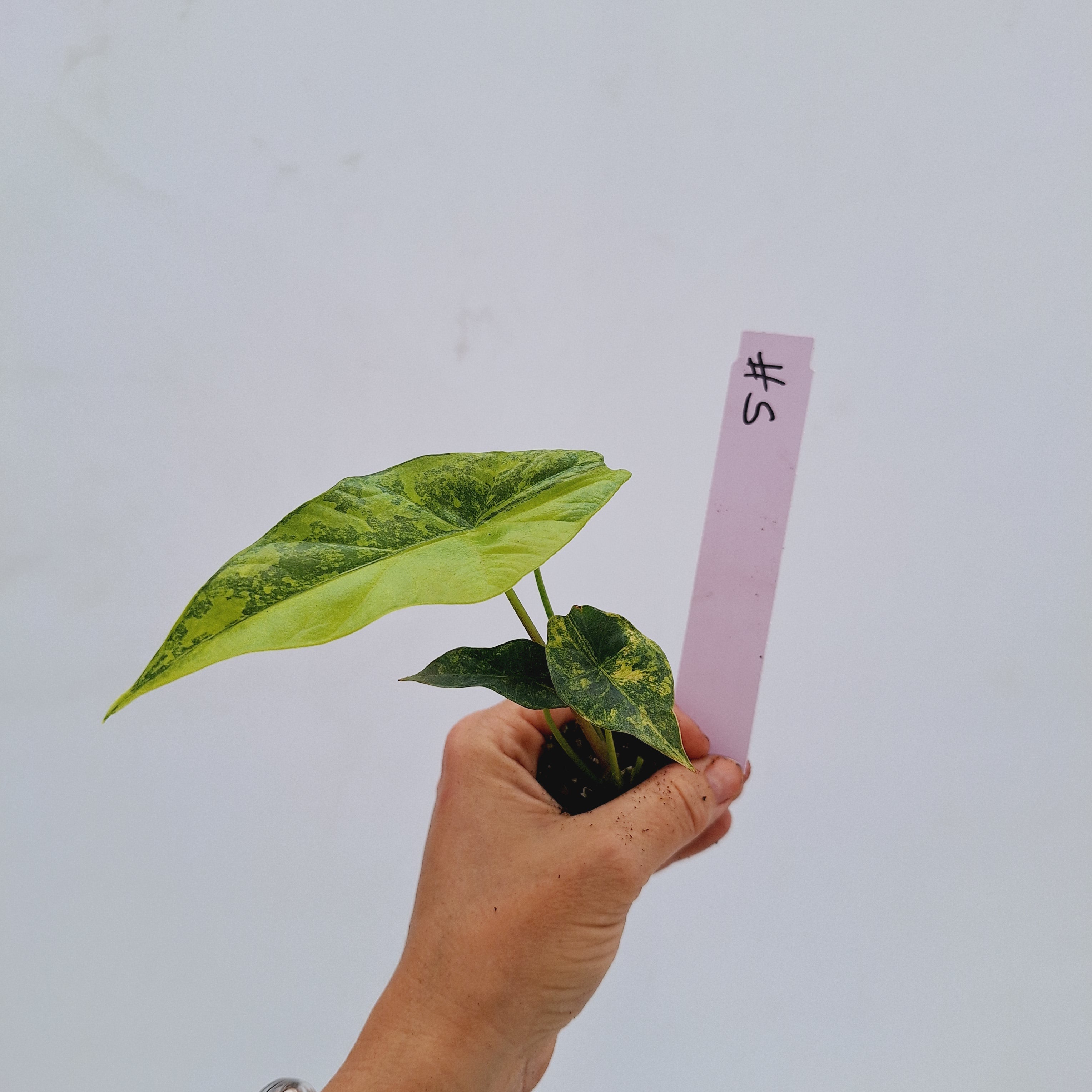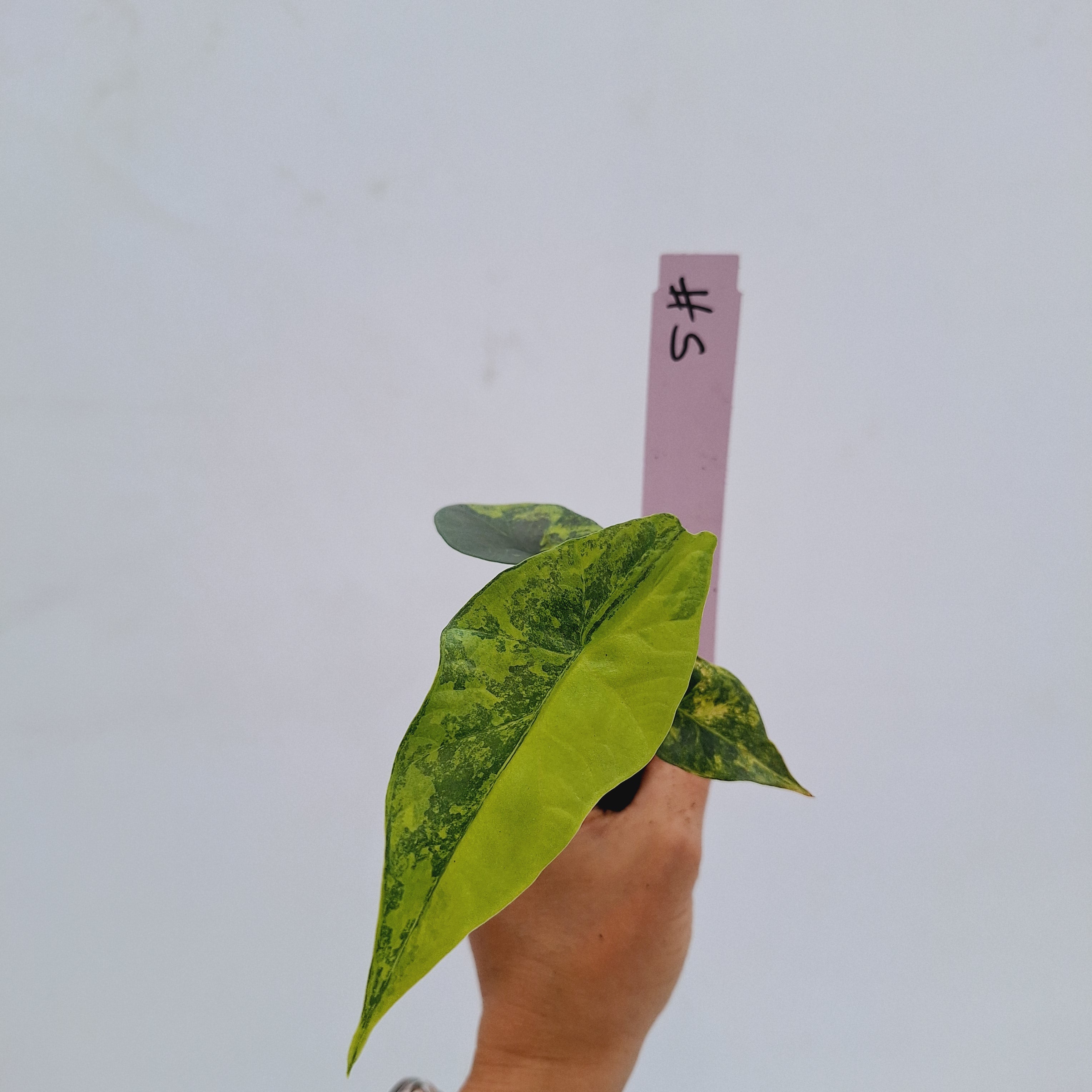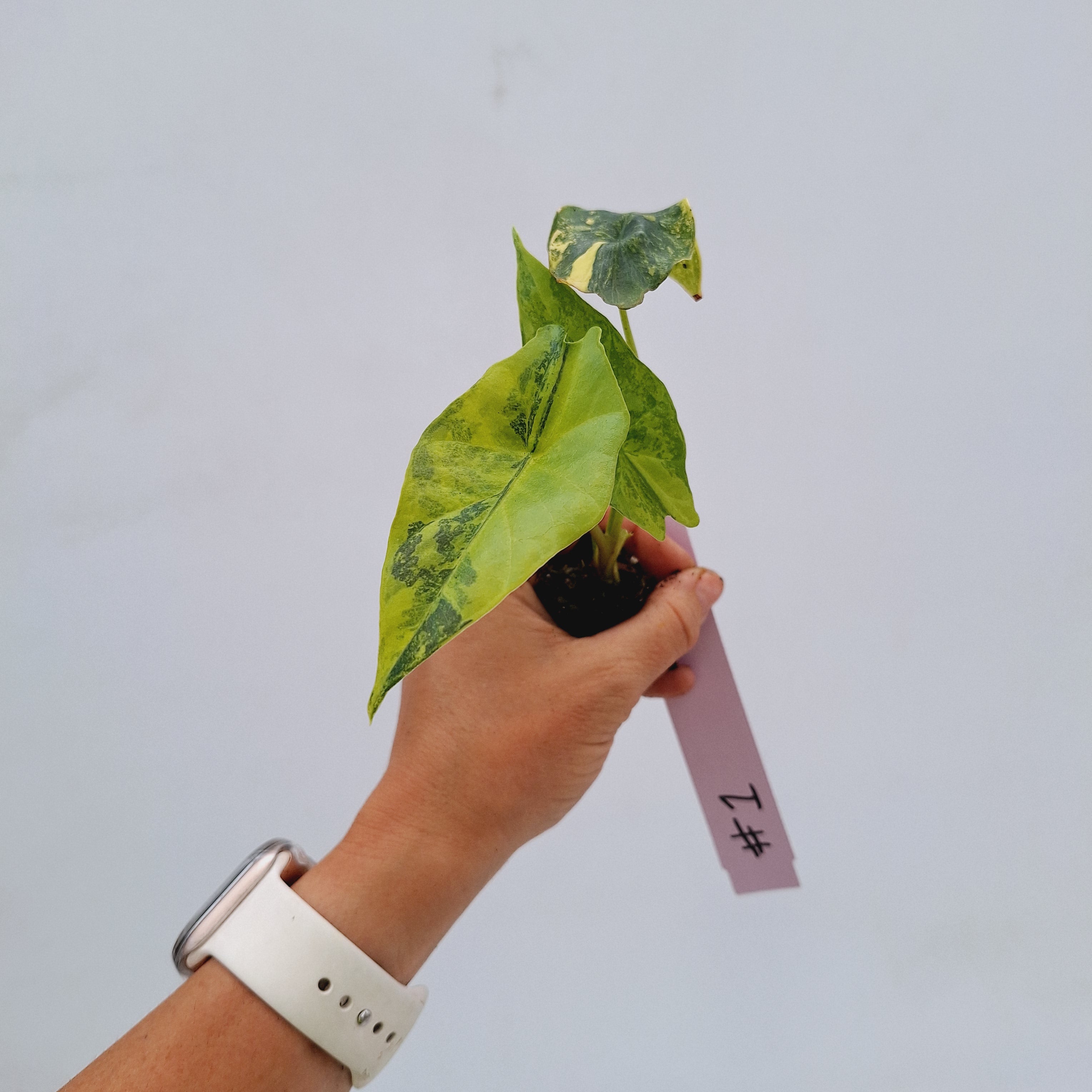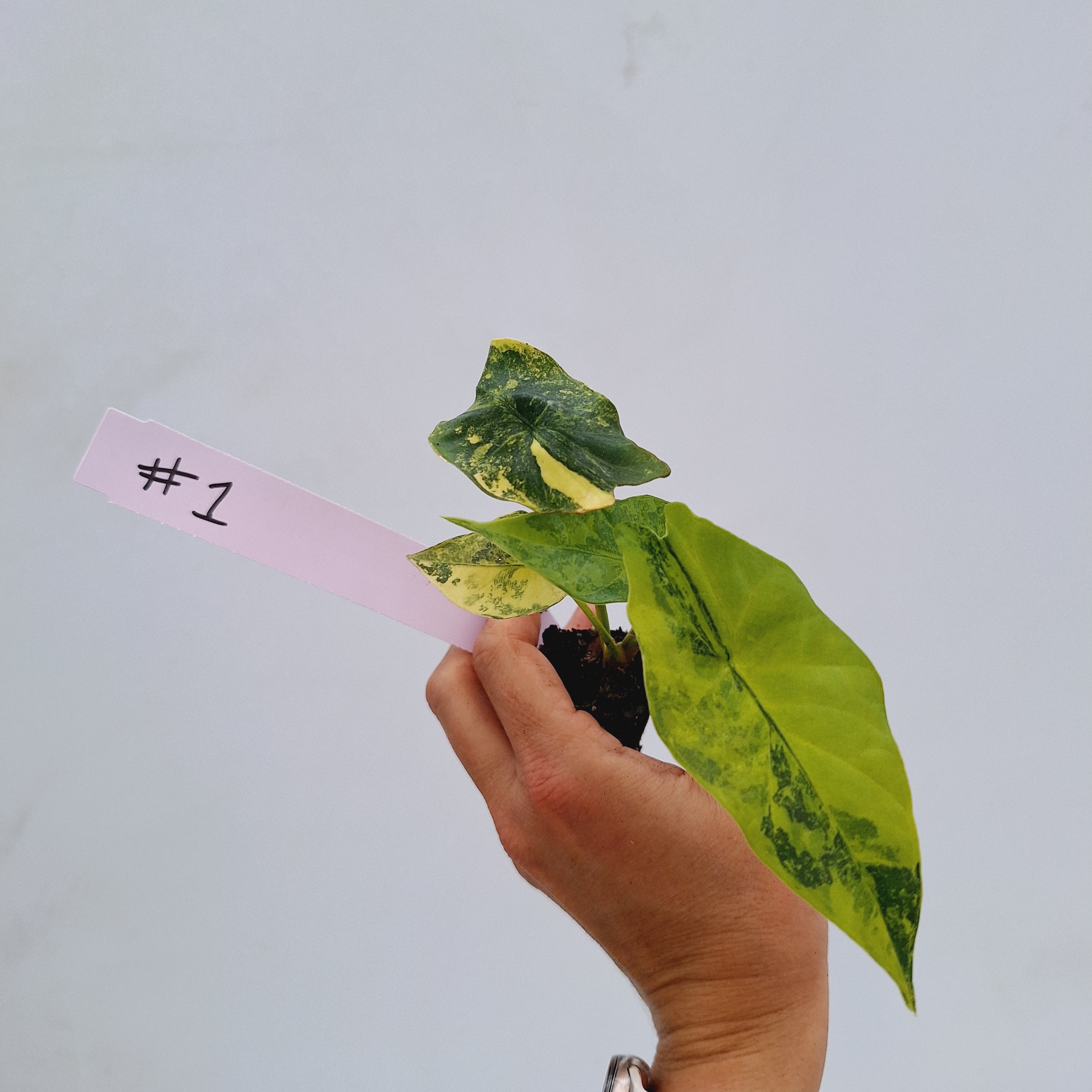
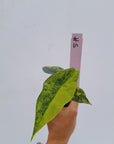
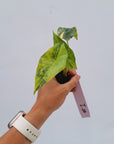
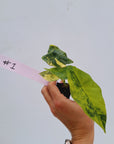
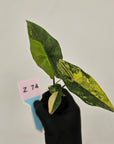


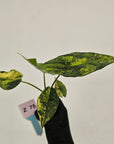

Alocasia ‘Simpo Aurea’ Variegata - Bare Bottom Baby
Alocasia ‘Simpo Aurea’ Care Plan
Light:
Prefers bright, indirect light. Too much direct sunlight can scorch the leaves, while low light may reduce variegation and slow growth.
Watering:
Keep the soil consistently moist but never waterlogged. Water when the top 2–3 cm of soil begins to dry out. Reduce watering slightly during cooler months when growth slows.
Humidity:
Thrives in high humidity (60% or above). Mist regularly, use a humidifier, or place near other tropical plants to maintain ambient moisture.
Temperature:
Ideal range is 20–30°C. Avoid temperatures below 15°C and protect from cold drafts or sudden temperature drops.
Soil:
Use a well-draining mix rich in organic matter — a blend of premium potting mix, perlite, and orchid bark works well. The soil should retain moisture but drain freely.
Fertiliser:
Feed with a balanced liquid fertiliser every 2–3 weeks during the active growing season (spring to early autumn). Pause feeding over winter.
Maintenance:
Wipe leaves gently with a damp cloth to remove dust and maintain healthy foliage. Remove any yellowing or damaged leaves to encourage new growth.
Pests & Issues:
Watch for common pests like spider mites, thrips, and mealybugs. Root rot may occur if overwatered or if the potting mix is too dense.
